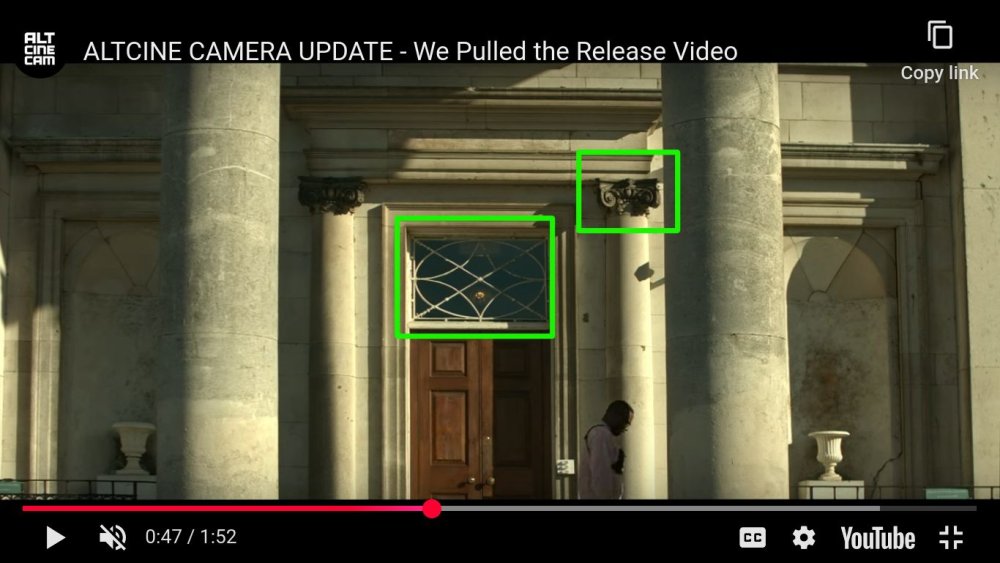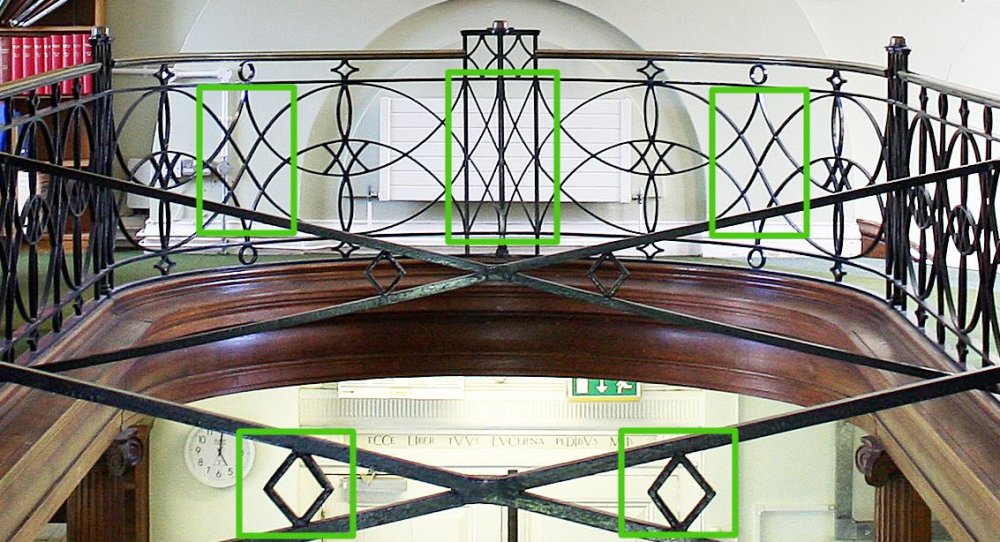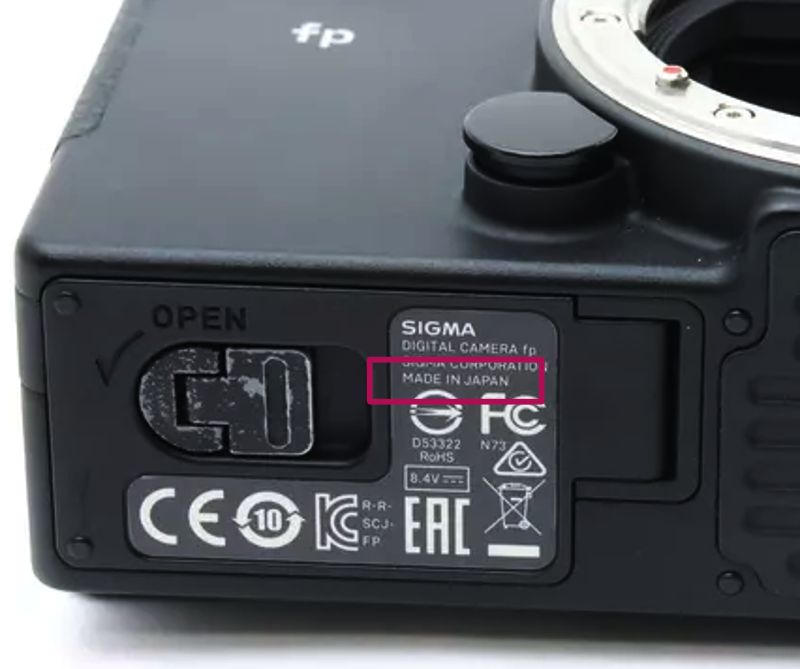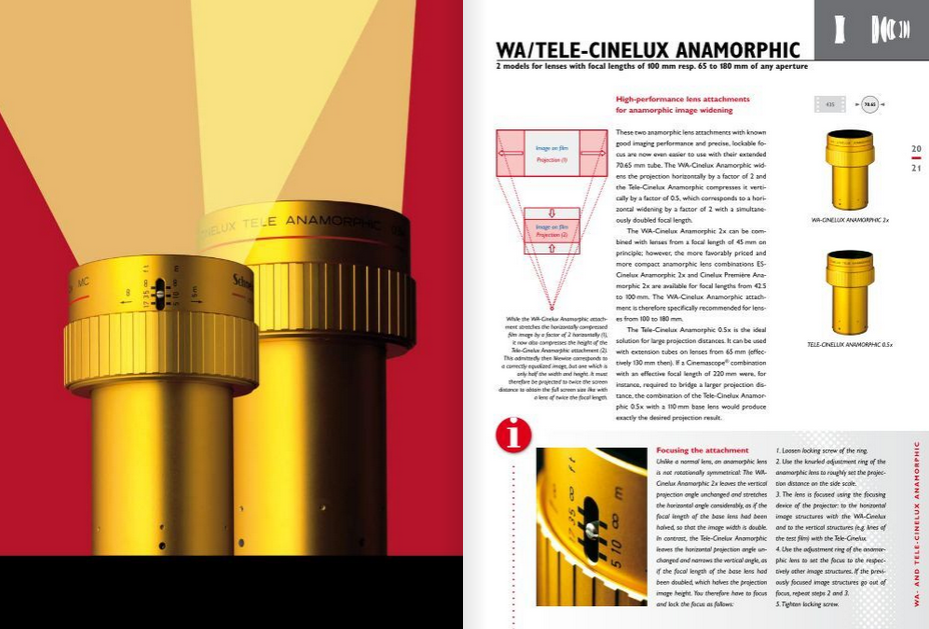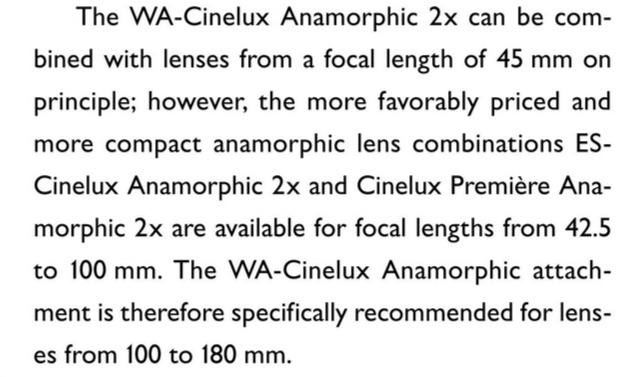-
Posts
32 -
Joined
-
Last visited
octoplex's Achievements

Member (2/5)
13
Reputation
-
 Davide DB reacted to a post in a topic:
Enshittification Full Ahead
Davide DB reacted to a post in a topic:
Enshittification Full Ahead
-
Resolve works great on Linux. The "Studio" edition is required for some codecs. Major graphics cards all have native Linux drivers available for download. First time Linux-Resolve set-ups will likely require some self-teaching regarding the Linux OS, but once the rush kicks in, there's no retreating from an opensource operating-system. Basically: if you know your way around a 35mm analog SLR, you're already in the prerequisite-intelligence demographic: Other migration tips for anyone who wants to taste the Linux "rich stuff" (The Goonies - 1985): Instead of Photoshop -> Use: Krita / Darktable / RawTherapee /Blender Instead of Microsoft Office -> Use: Libreoffice Instead of InDesign -> Use: Scribus Instead of Illustrator -> Use Inkscape Instead of Ableton Live / ProTools -> Use Bitwig Studio (not opensource) / Ardour / etc. I use all of this Linux software, in a professional context, and haven't touched a non-Linux system for over six years (yep, I don't carry a 'smart'phone). The most effective protest against fascism / late-stage phoney-capitalism is to stop using the products of that system. Protest without action is just noise. The greatest trick these legacy-corporations have pulled is convincing the public that there is no alternative to their slop. Even if you start simply by running Linux in parallel with your existing legacy-surveillance-OS, at least you have an exit strategy from the subscription-crackhouse that Adobe and others are running. Don't be another node on their networked fear-grid. Good luck! Volkswagen / Enshittification On the topic of VW cars (earlier in this thread): If you think VW's new subscription policy is offensive, take a look at what Volkswagen did throughout World War II. Volkswagen built and ran Nazi concentration camps Volkswagen routinely murdered the children of their slave-laborers. Volkswagen didn't merely collaborate with the Nazis. Volkswagen are the Nazis. VW are still genociding humanity, to this day, via faked-emissions tests (SOURCE: Scientific American). I'm not sure if any present-day Volkswagen customer is buying these vehicles with informed consent. This photograph should, by law, be placed on the door of every VW dealership. Then customers can make an informed choice: LEGAL: Our right to reproduce this image for critique is legally protected under the terms of 'Fair Use' enshrined in United States law (17 U.S.C. § 107). Fair Use permits the reproduction of a copyrighted work in order to criticize or comment upon it.
-
 sanveer reacted to a post in a topic:
Alt Cine cinepi cameras finally announced.
sanveer reacted to a post in a topic:
Alt Cine cinepi cameras finally announced.
-
 Geoff_L reacted to a post in a topic:
Alt Cine cinepi cameras finally announced.
Geoff_L reacted to a post in a topic:
Alt Cine cinepi cameras finally announced.
-
Thought I better flag this video up since there are some serious concerns here. I'm not sure what ALTCINE are up to: The video emphasizes certain symbols which are known to be associated with the organized ritual-abuse of childen, as reported by a Guardian Award-winning, Times / Telegraph journalist in this article here: https://vo.lc/School-Of-Fools-Aldenham.html I have taken screen-grabs of the symbols from the ALTCINE video posted above. I have highlighted the relevant symbols in green boxes: Ostensibly as a demonstration of the camera, the video then zooms into the symbol above the door, which contains one of the main symbols used by these cults: Additionally: The abacus on the capital of both columns either side of the door, precisely match the symbols used by the cult operating the Aldenham School Library (and at many other locations) where children were abused in rituals. The library can be seen in many photographs, here. I have included one below, for comparison: The symbol above the door in the ALTCINE video matches other symbols found at the same location, and many other locations of abuse, described in detail here and here. In summary, there's no gentle way to put this: For some reason the ALTCINE video is full of occult pedophile-symbolism. The Power Of Symbols Naturally, there may be some explanation for this: The makers of the video are unaware of the occult (hidden) purpose of the building in their video. However, the problem we have is that pedophiles actively use these symbols to demark territory, and to signal to each other that their behavior is socially acceptable; sometimes by including the symbols in videos and movies. These symbols are also designed to trigger an unconscious fear response in those who were abused in conjunction with these symbols, as children. Basic associative-conditioning. This may be very hard for some of us to accept, but there are those who walk among us who take immense pride in their abuse of children, and flaunt their 'power' in the architecture of buildings, and the media they create that includes these symbols. Let's hope ALTCINE made a serious mistake here. But to me, it looks intentional.
-
 PannySVHS reacted to a post in a topic:
Movies looked better before "color grading" was invented. Let's return to proper film-making.
PannySVHS reacted to a post in a topic:
Movies looked better before "color grading" was invented. Let's return to proper film-making.
-
 Andrew Reid reacted to a post in a topic:
Movies looked better before "color grading" was invented. Let's return to proper film-making.
Andrew Reid reacted to a post in a topic:
Movies looked better before "color grading" was invented. Let's return to proper film-making.
-
 mercer reacted to a post in a topic:
Movies looked better before "color grading" was invented. Let's return to proper film-making.
mercer reacted to a post in a topic:
Movies looked better before "color grading" was invented. Let's return to proper film-making.
-
 Davide DB reacted to a post in a topic:
Movies looked better before "color grading" was invented. Let's return to proper film-making.
Davide DB reacted to a post in a topic:
Movies looked better before "color grading" was invented. Let's return to proper film-making.
-
 Alt Shoo reacted to a post in a topic:
Movies looked better before "color grading" was invented. Let's return to proper film-making.
Alt Shoo reacted to a post in a topic:
Movies looked better before "color grading" was invented. Let's return to proper film-making.
-
 octoplex reacted to a post in a topic:
Movies looked better before "color grading" was invented. Let's return to proper film-making.
octoplex reacted to a post in a topic:
Movies looked better before "color grading" was invented. Let's return to proper film-making.
-
Finally, a forum with a mission-statement I can get behind. Thank you!
-
 octoplex reacted to a post in a topic:
Chat: Films, art and cinema
octoplex reacted to a post in a topic:
Chat: Films, art and cinema
-
 octoplex reacted to a post in a topic:
Forum ideas
octoplex reacted to a post in a topic:
Forum ideas
-
The notion of "color grading" is largely a commercial-construct designed to create the job of "colorist" and to sell computer hardware and software. Movies made after the 1980s look consistently worse and worse, because the popular concept of "fixing it in post" has led a generation of film-makers to disregard the importance of proper lighting, story, acting, and set design. Something went very wrong in cinema after the mid-90s. Both socially and artistically. This degradation of quality in film-making coincided with three shifts in film-aesthetics: 1. The move from celluloid to digital. 2. The move from capturing a look based in 'reality', to color-graded footage. 3. An odd obsession with increased resolution. With increased-resolutions, the decay of cinema became even more profound: When an actor's face is shot in close-up at 8k, we are seeing a level of surface-detail to the human-face that we would NEVER see in reality. So, what is the 8k+ film-maker actually capturing? Cinema is predicated on our 'suspension of disbelief'. To intentionally shoot a film that cannot be believed, because it does not represent 'reality' in a way that we could possibly see, is anti-cinema. The Rise of Anti Cinema Through both malice, and incompetence, cinema has decayed. Before it can be saved, we must acknowledge the extent of this sickness, and then take steps to remedy it. We need to rely less on software, and more on our eyes, on set. We need to embrace imperfection, and return to capturing a plausible reality. We were better off when analog color-timing was the only post-production option for "grading" footage. Cinema can be fantastical, magical, or extraordinary, but it should never be unbelievable. Let's return to honest, practical effects; proper lighting; and artistry in set-design. It's time to stop color-grading. 25 Years of Madness Since the launch of the Sony F900, over 25 years ago, camera companies have been promising a digital replacement for analog 35mm film. For 25 years, they have been completely unable to deliver the 35mm analog look. Instead, film-makers have been expected to mess-around in computer software chasing an aesthetic that can rarely be achieved, and that the camera companies should have been providing as a default output. Why (given the equivalent lighting, set and actors) can no commercially-available digital video camera shoot footage straight-out-of-camera that properly emulates the Kodak 5247 and Kodak 5254 color-negative stocks? These stocks practically defined cinema as we knew it, but they do not exist as digital equivalents. We got scammed Why must young film-makers wade about in a swamp of technical-nonsense, graphics cards, manuals, color-grading, and hardware chasing the look that an off-the-shelf roll of 35mm stills-camera film would have delivered instantly, for five-dollars, in the 1960s, 70s, and 80s? Why can't these stocks be delivered straight off-camera? The camera industry has pushed responsibility for great video-capture onto the "colorist". The colorist is a symptom of decay in the camera and film industry; necessary only because of the technical failings of camera manufacturers, and their inability to simply deliver the replacement for Kodak stocks they promised over 25 years ago. The colorist is also a symptom of the decay in the excellence of artists on set. The Broken Promise of the Camera Industry We were promised film in a digital format. But, instead, the camera-industry redefined "film" as a sub-par version of itself. Then all the failings of this new medium were commercialized in a host of hardware and software to "repair" the damage done. Why is it so difficult for the digital-camera industry to care about creating an accurate version of the very medium that it claimed to be replacing? The digital "Cinema" cameras of today have almost nothing to do with cinema as we knew it. This is nothing short of fraud.
-
 Andrew Reid reacted to a post in a topic:
Sigma Bf (Beautiful Foolishness) Unibody Full Frame Camera
Andrew Reid reacted to a post in a topic:
Sigma Bf (Beautiful Foolishness) Unibody Full Frame Camera
-
Sigma have delivered a masterpiece here. Two main reasons: 1. This is a camera manufactured by adults in Aizu, Fukushima, Japan. In today's camera market it is very hard to find products manufactured by adults in free countries. Personally, I only buy adult-manufactured cameras. 2. There's no on-board surveillance system. The Sigma BF does not have WiFi or Bluetooth soldered to its mainboard. Again, something that is increasingly hard to find. It's almost as if points 1 and 2 might be connected in some way. Something to meditate on... Aside from that. This camera looks gorgeous. 純粋に天才だ。 Could it be that ethics, and integrity of corporate-action, results in integrity, and beauty, of form? Something else to meditate on... Sigma BF for professional filmmakers? Fascinated to know what the rolling-shutter is like on the Sigma BF for video. Will it be possible to enable a global-shutter feature for lower-resolutions? Even if global-shutter on the Sigma BF is only possible for 1080p, I'd consider shooting a feature-film with it. Potentially, the BF is a perfect camera for Ethics-First Film-makers. I could see this new Sigma BF being the improved-reincarnation of the legendary (and sadly discontinued) 16mm Fairchild BMPCC OG, and the Bolex D16. A tool for real-artists. If Sigma is listening: Is there any chance of finessing your masterpiece by adding global-shutter for video? Even if only for a lower-resolution readout. Regardless, あなたの勇気と勇敢さに感謝する。
-
 Andrew Reid reacted to a post in a topic:
The EOSHD Interview - Kazuto Yamaki, CEO of Sigma and Takuma Wakamatsu, Sigma Fp Product Manager
Andrew Reid reacted to a post in a topic:
The EOSHD Interview - Kazuto Yamaki, CEO of Sigma and Takuma Wakamatsu, Sigma Fp Product Manager
-
 octoplex reacted to a post in a topic:
Vimeo, End of an Era
octoplex reacted to a post in a topic:
Vimeo, End of an Era
-
Having been part of this industry, with insider-knowledge on the tactics these people use, I can tell you that this is EXACTLY the kind of thing that happens. It's impossible to prove this level of malfeasance, and this is the reason why it is so effective. Remember that Google is a well-evidenced CIA-project. Google's objective online is 'intelligence'-harvesting and psychological-manipulation for power and profit. As you have noted, anything that competes with the CIA (Google)'s ability to gather information, censor voices, and manipulate public-opinion, becomes a target for infiltration. Vimeo was a serious-threat to power because it offered an independent, community-run information stream. It is the purpose of Google / the CIA to destroy human-community, where it discovers it, and to replace natural-conversation with top-down programming. Existing power-systems do not like the free-flow of information because it exposes their crimes. Freedom of speech is the antithesis of evil; therefore evil despises it at every turn. As Google's founders, the CIA, famously said: "We'll know our disinformation program is complete when everything the American public believes is false." - William J. Casey, CIA Director (1981)
-
Thanks for this great interview with Kazuto Yamaki and Takuma Wakamatsu. Here in 2024, we're still waiting for a major update to the Sigma FP, so I wanted to offer my thoughts to Sigma: Sigma is the only manufacturer making a cinema-camera in an ethical region (Japan). This makes their cameras VERY desirable to ethical filmmakers. Admittedly Arri (sort-of made in Germany...) and Sony (Indonesia) are getting closer. As a cinematographer, my suggestions for an update to the Sigma FP/FP-L are: - Add Global Shutter: Even if this requires a drop in resolution. Sigma could capture the entire market for ethical-filmmakers seeking a close-to-celluloid look. Rolling-shutter is over. Even if it's fast, it adds sub-perceptual oddness that does not replicate film. - Focus on film-looks: The post-processing market is big (Dehancer / Filmbox / LUTs etc) and there is an entire generation chasing the Kodak-Eastman stock that defined the 70s/80s golden-age of movies. Why not offer a camera that has been specifically designed to properly recreate this stock in hardware? In summary: Other cinema-camera manufacturers appear to have lost all sensitivity to the 'romance' of the image they seek to capture. I'm not sure what most video camera-companies are aiming for anymore. Some kind of super-sharp; hyper-resolute; bland-scrutinization of the 'real'; or so it seems. The result is ugly without extensive post-processing. Instead: Sigma could make a cinema camera that takes Eastman Color 5247/7247 film (or similar) as its benchmark. Sigma could refer back to the time when movies had SOUL, and use that as a starting point for a new ethos in the industry. A new wave of filmmakers are tired of spec-sheet-junkie-YouTube-streamer-cams and ten-billion-pixel sensors made for instagram-yuppies. Some of us are ARTISTS and want a cinema camera with "Made in Japan" ethics, and an image that prioritizes BEAUTY and GRACE; not pixel-counts and a bizarre-preoccupation with uncanny / creepy-levels of sharpness. We were happy with Super16. I hope Kazuto Yamaki is somewhere out there, reading this. Sending you, and everyone at Sigma, courage!
-
It's much worse than what I've described. Prostitution is entry-level blackmailing of "journalists". If you heard the full-story of what these consumer-electronics reviewers got up to in Tokyo and Las Vegas during my time at at a major broadcaster, you would be sick. The new-generation of YouTubers have a much bigger audience than those tech-journalists used to. The stakes are higher, and the kompromat system is in full-effect.. The major camera manufacturers are self-acknowledged child-slave-traders. They use children in the Congo [Reuters] to mine their lithium. They use child-slaves on their supply chains, without hesitation [Business Insider]. These same manufacturers are, at other times, ashamed of it. They obfuscate how their cameras are made. Red cameras say "Made in USA" but if you take one of their cameras apart, all the critical-circuit-boards inside are clearly marked with the logo of a well-known Chinese-communist manufacturer. Arri say their cameras are "Made in Germany" but they have a factory in China. Arri's China factory is producing... nothing. If you believe the label on the chassis. The entire camera industry is founded on a deceit: These manufacturers cannot even be honest about manufacturing in the slave-zone using children. They are child-abusers; and their products are fueled by the lithium mines. Hard to accept; and many here will struggle with self-awareness. Why does no major reviewer ever emphasize where these cameras are made? Because the camera (child-slaver) industry OWNS the reviewers. If you review a Red camera, and mention where the circuits come from, you don't get any more Red Camera freebies. If you review an Arri camera and mention where the circuits come from; or precisely which children mined the lithium: Blacklisted. Downranked by Google (YouTube) at the behest of the conglomerates who own both industries. If a journalist attends a launch party in Tokyo and gets themselves compromised, now they are moved up the Google ranks, and their videos are top of the results. Puppets get promoted. I was fortunate (unfortunate) enough to see this system from the inside. YouTube's backers (the corporations) will not promote 'influencers' they do not own. They only invest in compromised people. It's essentially the same as the political system. Watching YouTube and using Google eliminates a person's critical-faculties. If Google promote self-harm, most users will do it. As the last few years proved. YouTube is a psychological-manipulation tool: Advertising disguised as opinion. The camera-reviewers on YouTube are, mostly, behind the scenes, the advertising-wing of the same companies selling the cameras. Naturally, you will feel angry reading this, but consider using that anger to change the industry. It's time to wake up.
-
This is all just the tip of the iceberg. I used to work for a broadcaster who covered consumer-electronics reviews, including video-cameras, Many electronics-reviewers are compromised by the electronics-corporations at every level, up to and including, blackmail. I witnessed first-hand our 'reviewers' flown out to 'product launch' locations like Tokyo, and Las Vegas. Here many of them were pampered; loaded up on alcohol, and compromised (typically using adult-prostitutes, and worse). Once inducted into this 'club' of blackmailed journalists, these reviewers are 'groomed' for positions higher in the 'journalist' food-chain; one is now a presenter on a major television show for cars; others are scattered across the 'tech' field. The reviewer-scene is mostly puppets. YouTube (and the television networks) are advertiser-funded. The advertisers basically own them, and push their own (blackmailed) reviewers to the top of the rankings. You are the product YouTube sells to its customer: The advertisers / corporations. Remember, these camera companies have zero concerns about children working in the lithium-cobalt battery-mines; they certainly have no concerns about placing their puppet-'reviewers' across YouTube etc, and masquerading these puppets as legitimate independent-journalists. Almost everything you see on YouTube is fake.
-
syands1619 started following octoplex
-
You're absolutely right. The cost-savings that result from Apple knowingly using child-slave labor to manufacture the iPhone are incredible. Apple passes these amazing cost-savings straight onto the consumer, allowing Apple to undercut companies that use adults to manufacture cameras. This is why Apple is one of the richest companies in the world. Child slaves are pure profit for Apple, and the average consumer loves their child-slave-manufactured iPhone. Of course, the consumer is a surveillance-node; so also a kind of slave. In a way, it's perfect karma. Built by slaves; used by slaves.
-
UPDATE: I have managed to locate an old Schneider brochure from around the time this lens was manufactured. The Cinelux WA I have appears to have been a top-of-the-line item. The brochure may be of great interest to anyone else who is adapting a Cinelux lens of this era. This is good news, as far as the likely-quality of the lens goes, but there's not a huge amount of technical detail in the brochure. This is pretty much all it says about the WA edition:
-
The technical merits of Apple's new iPhone are irrelevant when two major factors are taken into account: 1) The iPhone is a surveillance tool. Their ARM implementation is a black-box. 2) Apple knowingly uses child slave-labor, as reported by Business Insider. This will likely be an unpopular perspective because, as consumers, we must live in a constant state-of-denial regarding the reason Apple is so profitable: Namely, that they are documented child-slave traders and exploiters. Personally, when I stack up the performance of the new iPhone's optics against, for example, an Arri, I have to bear in mind that the Apple camera-system is demonstrably made by child-slaves in communist China, and the Arri is made by fully-grown adults in Germany. I understand that others may have a different purchasing criteria, but for me the child-slavery thing is a deal-breaker. I like my cameras made by adults. Call me old-fashioned.
-
 octoplex reacted to a post in a topic:
Sony Burano : a groundbreaking cinema camera
octoplex reacted to a post in a topic:
Sony Burano : a groundbreaking cinema camera
-
Incidentally, the reason why the length of the taking-lens is important in this type of adapted-movie-theater-anamorphic-lens set-up is because of the vignetting-risk. Wider taking-lenses are more prone to capturing a vignette because the field-of-view may partly reveal the housing of the anamorphic-block and/or the variable-diopter single-focus system. That said, this particular Cinelux WA anamorphic-block appears larger at the front element than the back element; I would speculate this slightly reduces the vignette-risk. Either way, experimental focusing should be possible, even with a taking lens which is not ideal (ie too wide). The issue would be the vignette. Without a variable diopter, and only a taking-lens, the Cinelux can only focus at a minimum of five feet. Or, at least, that is my understanding. Are you able to focus your FX3 on objects which are at least 5ft away using the taking lens and this Cinelux? To be clear, there should be 3 components in a single-focus solution with this lens: Taking Lens -> Anamorphic Block (Cinelux) -> Variable Diopter.





